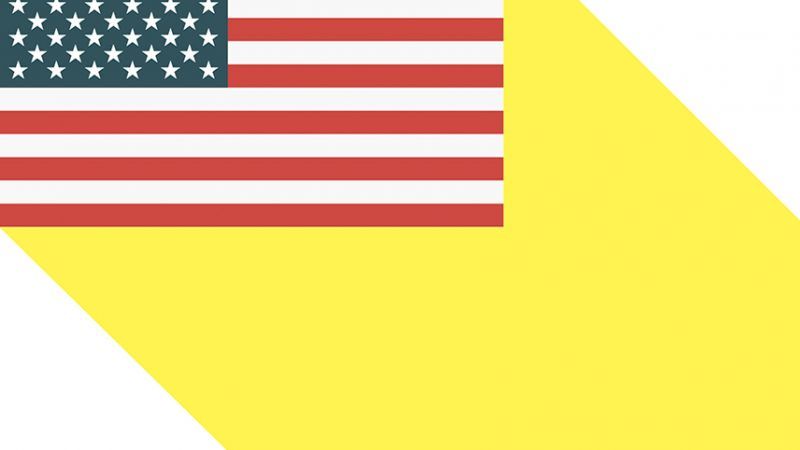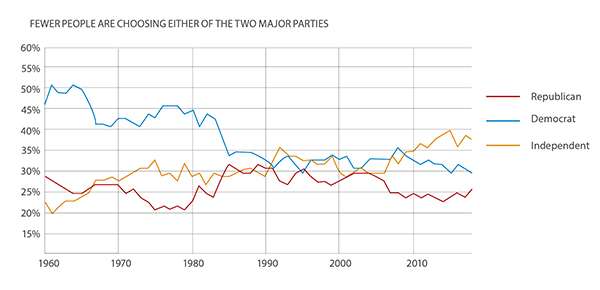America Has More Independents Than Ever
But don't get too excited.


In the past few years, a larger share of Americans has opted not to identify as either a Republican or Democrat than at any point since pollsters began regularly asking about party affiliation. In 2015, according to Pew Research Center, some 40 percent of adults in the country self-described as "independents" rather than choosing one of the two major parties. That's up from a low of just 20 percent in 1961.
The percentage of American adults claiming to eschew traditional partisan politics has been inching and skipping upward over the decades, strongly suggesting that, as choices proliferate in most other areas of life, voters have become increasingly disgusted with the Team Red/Team Blue binary. But beware the temptation to extrapolate about electoral outcomes from this trend: It's far from clear an alternative party is poised to benefit at the ballot box.
If you push so-called independents on whether they "lean" toward one party or the other, a vast majority will admit they do. And "in many respects," Pew reported in 2014, "those who lean toward the parties—even if they identify as independent—have attitudes and behaviors that are very similar to those of partisans." In reality, most of those who initially refuse to be affiliated with either party will tend to line up with one side or the other.

That is just what we would expect based on "Duverger's Law," the political science maxim that third parties are hobbled by winner-take-all systems. Without proportional representation, voters in countries like the United States have little incentive to cast a ballot for a candidate unless his or her party stands a realistic chance of winning a plurality in their district. Even a strong third-party showing of, say, 20 percent would garner no political power at all. Thus the trope that supporting someone other than a Republican or a Democrat amounts to wasting your vote.
Accordingly, third parties have struggled even as the proportion of Americans calling themselves independents grows. In 2016, Libertarian Party nominee Gary Johnson and Green Party nominee Jill Stein together captured less than 5 percent of the electorate, or one-quarter what unaffiliated candidate Ross Perot got in 1992. Yet Pew found the same share of Americans (36 percent) identifying as independents during the two election cycles. We are less partisan than ever, it seems, except at the moment when it counts.
This article originally appeared in print under the headline "America Has More Independents Than Ever."
Show Comments (90)